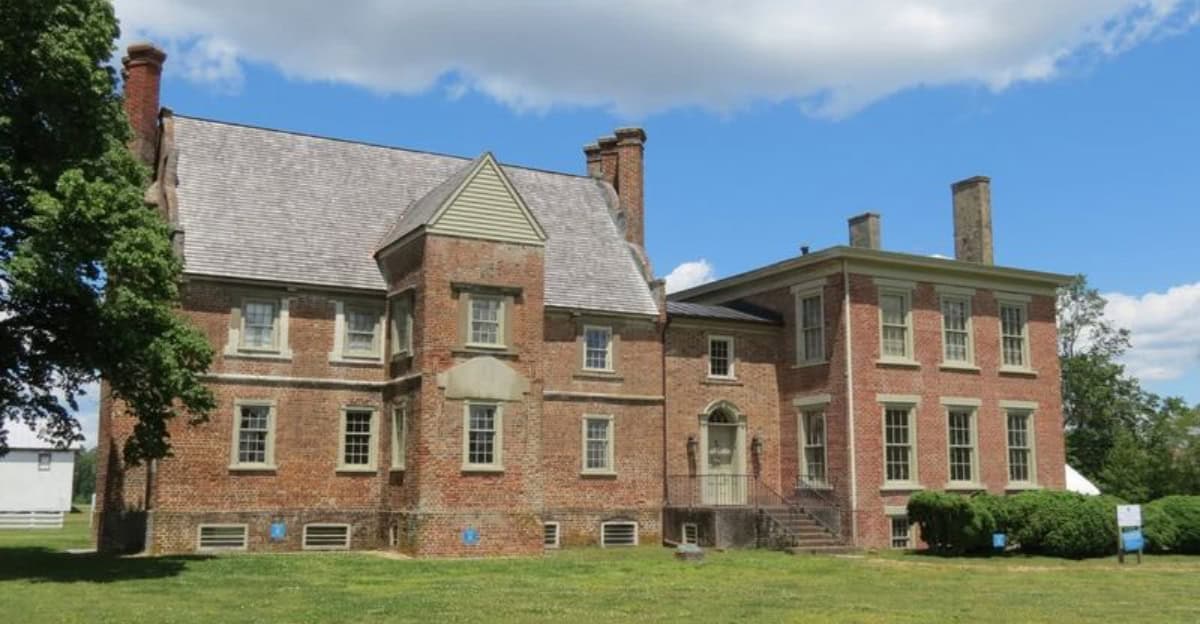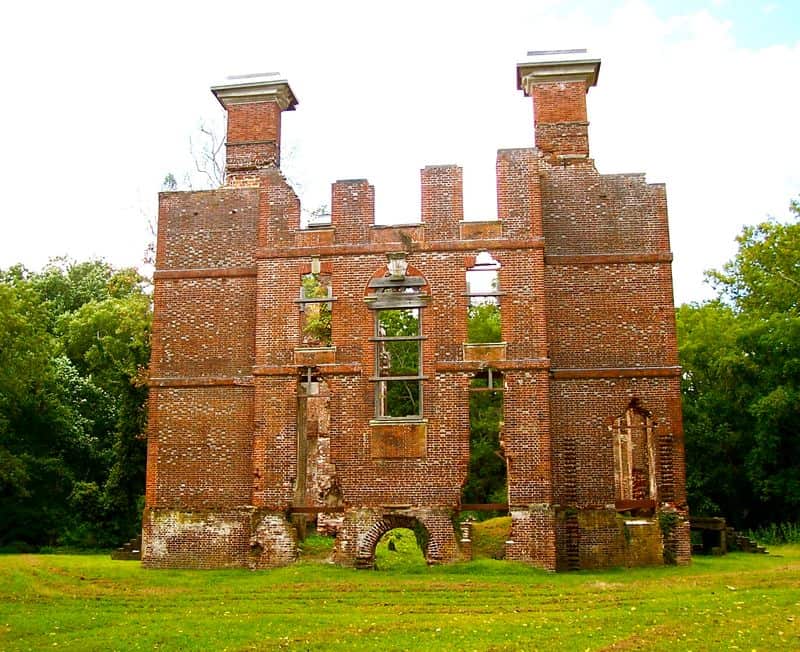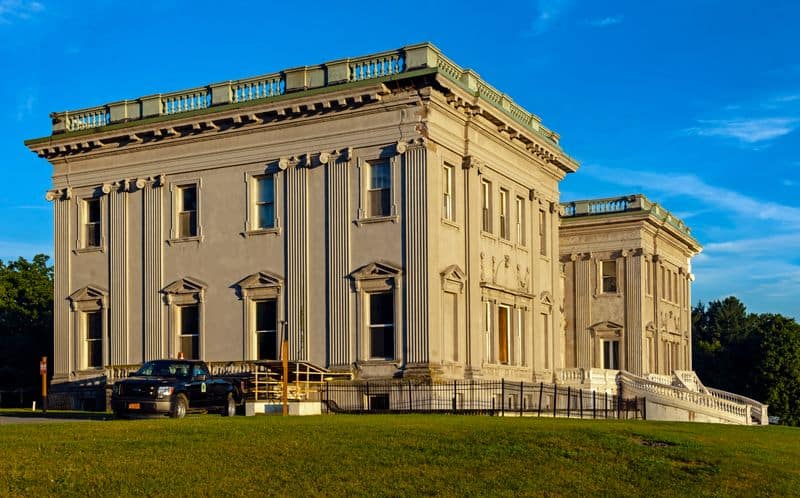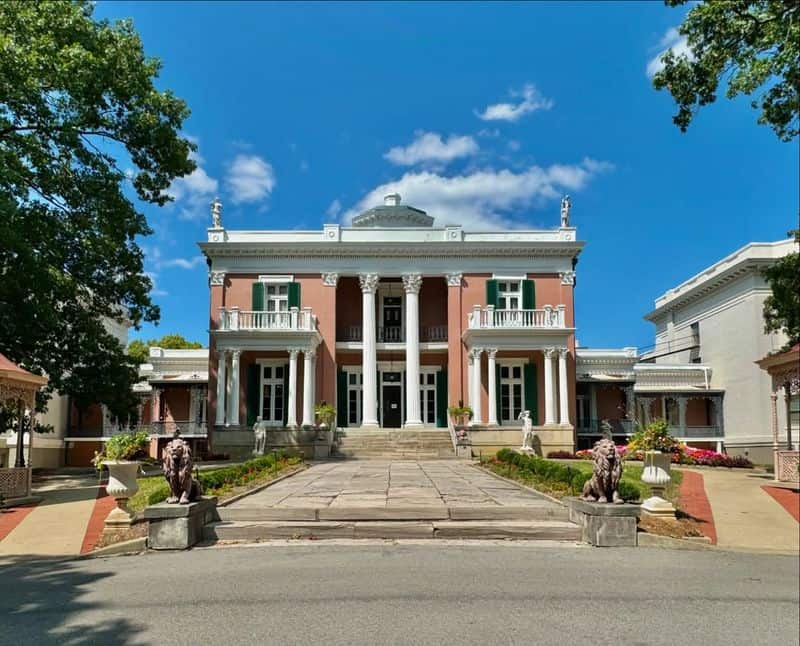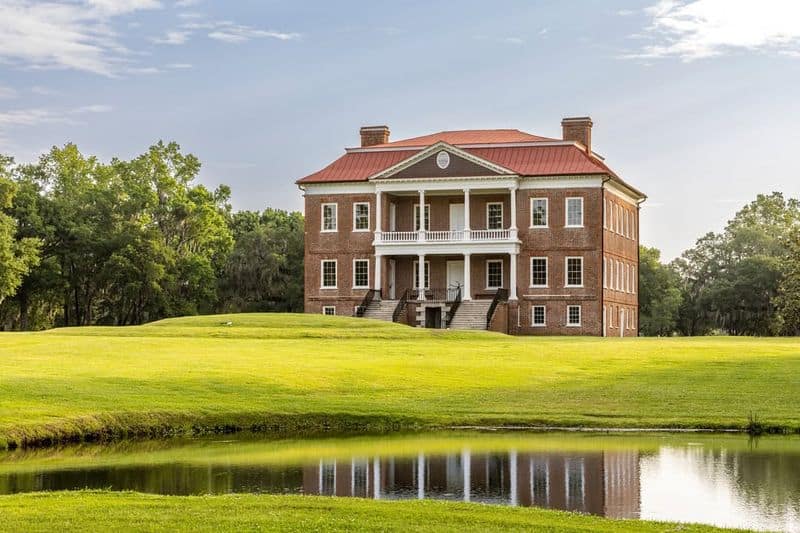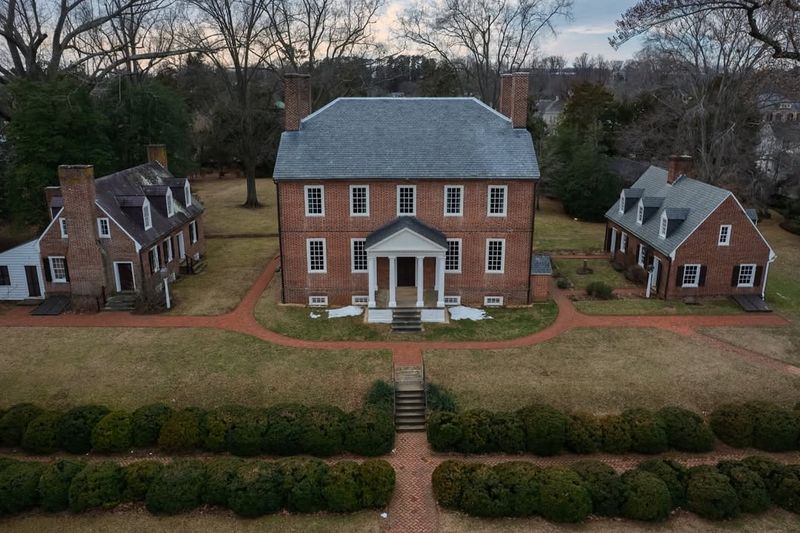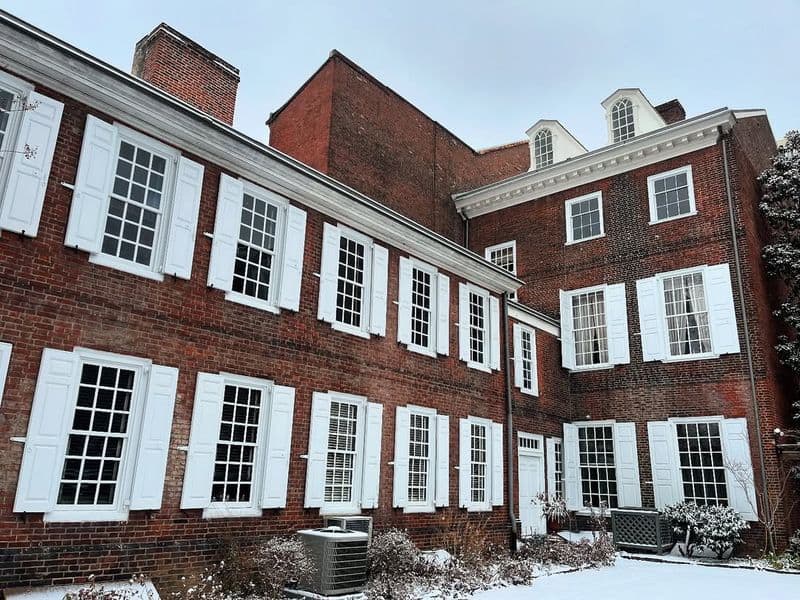Discover the charm and grandeur of historical brick mansions that have witnessed centuries of history.
These architectural marvels, each with its own unique story and design, offer a glimpse into the lifestyles of bygone eras.
From the Georgian elegance of the Chase–Lloyd House to the opulent extravagance of the Staatsburgh State Historic Site, explore 10 of the most distinguished brick mansions that continue to captivate imaginations and stand as testaments to architectural ingenuity.
1. Chase–Lloyd House
Step into the world of the Chase–Lloyd House, where history whispers through finely carved mahogany doors. This Georgian masterpiece in Annapolis, Maryland, was built between 1769 and 1774.
It’s among the first three-story brick mansions in the Thirteen Colonies, boasting Palladian windows and a grand central staircase.
Samuel Chase, a signer of the Declaration of Independence, originally commissioned this elegant abode.
Walking through its halls, you can almost hear the echoes of colonial America’s vibrant past. Its stately presence remains a beacon of architectural excellence and historical significance.
2. Rosewell Plantation
The Rosewell Plantation in Gloucester County, Virginia, was once the crown jewel of colonial mansions. Built in 1725, its grandeur was unmatched with Flemish bond brickwork and twin octagonal cupolas.
Although now in ruins, the aura of its past elegance lingers. Legend has it that Thomas Jefferson may have drafted the Declaration of Independence within its walls.
As you wander through its remnants, the whispers of history envelop you, detailing a tale of colonial opulence and revolutionary spirit. A visit here is a journey back to a time of architectural splendor.
3. Staatsburgh State Historic Site (Mills Mansion)
In the heart of Staatsburg, New York, the Staatsburgh State Historic Site, or Mills Mansion, stands as a Gilded Age icon.
Originally renovated in 1895, this 30,000-square-foot Beaux-Arts mansion dazzles with marble-lined dining rooms and ornate ceilings.
It preserves 95% of its original furnishings, offering a rare glimpse into a lavish past.
The grand staircases invite you to imagine the elegant soirées once held within its walls, where whispers of opulence still resonate. A visit here feels like stepping into a time capsule of elegance and history.
4. Nickerson Mansion
Known as the “Marble Palace,” the Nickerson Mansion in Chicago is a testament to Italianate luxury.
Built in 1883, it showcases extensive marble and onyx, intricate woodwork, and mosaics that reflect a variety of international design influences.
Walking through its halls, one feels enveloped by the cool elegance of stone and the warmth of wood.
This mansion stands as a cultural relic, inviting visitors to explore a past era of design innovation and aesthetic opulence. Each room tells its own story, waiting for you to discover its secrets.
5. Hammond-Harwood House
The Hammond-Harwood House stands as a masterpiece of Anglo-American architecture.
Built in 1774 in Annapolis, Maryland, its elegant proportions and fine woodwork reflect the genius of architect William Buckland.
This Georgian mansion is a delight to the senses, with each room meticulously crafted to perfection. Walking through its halls, the refined beauty and symmetry invite admiration.
The house remains one of the finest examples of its kind, a vivid reminder of architectural brilliance and historical significance. It exudes an aura of timeless grace and sophistication.
6. Belmont Mansion
Perched in Philadelphia, the Belmont Mansion is a celebration of Palladian style, built in 1745. Its red brick construction, symmetrical design, and classical details create an aesthetic delight.
Once a social hub in the 18th century, the mansion hosted gatherings that echoed with laughter and wit. Today, its halls remain silent yet regal, offering a window into a lively past.
Visitors are drawn to its harmonious architecture, which has gracefully withstood the tests of time, inviting all to experience a slice of Philadelphia’s storied history.
7. Drayton Hall
Drayton Hall in Charleston, South Carolina, is the oldest preserved plantation house open to the public. Built between 1747 and 1752, its Georgian-Palladian architecture is a marvel.
The original brickwork and historical interiors transport visitors to a bygone era. Each brick tells a tale of resilience and elegance, standing as a testament to history’s endurance.
As you explore, the house offers a profound connection to America’s past, allowing you to walk in the footsteps of those who shaped history. It’s a living monument to architectural and cultural heritage.
8. Kenmore Plantation
Kenmore Plantation in Fredericksburg, Virginia, is known for its exquisite Georgian architecture. Built in 1775, it features elaborate plaster ceilings and robust brick construction.
This handsome mansion was home to George Washington’s sister, Betty Washington Lewis.
As you wander through its rooms, the intricate details captivate, telling stories of familial bonds and historical moments.
It’s more than a house; it’s a journey into the past where every corner reveals a piece of history. A visit here is an invitation to explore the personal side of America’s founding era.
9. Powel House
The Powel House in Philadelphia is a Georgian delight, built in 1765. Known for its elegant interiors, it has played host to prominent figures of the American Revolution.
Its red brick facade exudes a quiet dignity, while inside, the rooms whisper stories of intrigue and diplomacy.
The Powel House isn’t just a building; it’s a repository of history, inviting visitors to step into a world of revolutionary fervor and refined elegance.
Its beautiful architecture continues to enchant, offering glimpses into a pivotal time in American history.
10. Bacon’s Castle – Surry County, Virginia
Bacon’s Castle, built in 1665, stands as the oldest documented brick dwelling in the United States.
This architectural gem, constructed for planter Arthur Allen, is a rare example of Jacobean architecture in North America. Its Flemish gables and triple-stacked chimneys make it a distinctive sight.
During Bacon’s Rebellion in 1676, followers of Nathaniel Bacon occupied this grand home, giving it the name we know today.
Visitors can explore the mansion’s museum, immersing themselves in 17th-century colonial life and the rich history that echoes through its corridors.

